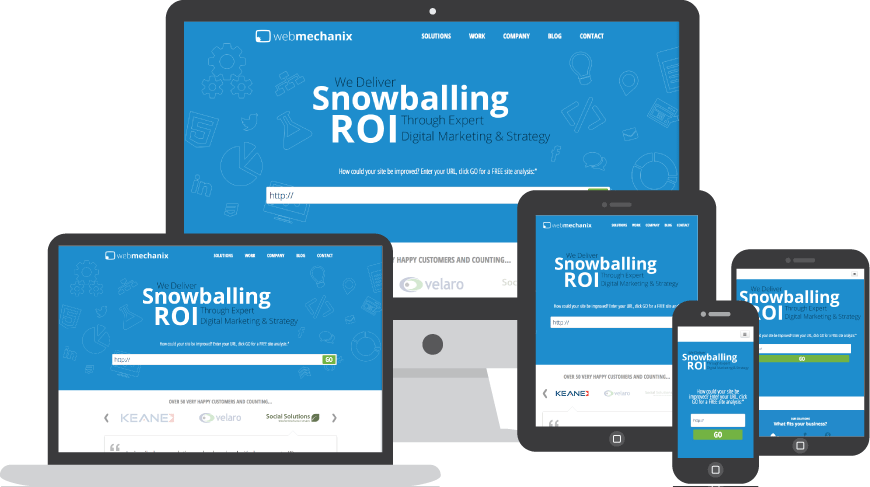
Do You Need A Responsive Website?
The web is changing. Visitors are using dozens of new devices to access your site and each device is displaying a slightly different version. Some versions of your site are better than others.
Search engines are aware of this issue. In their interest of providing the best content possible for each search query, they’re beginning to discriminate based on how a website handles different devices. If your website can’t adapt to the needs of visitors and their different devices, your traffic could stagnate.
Responsive web design is one way to deal with this shift. There are other solutions, but they’re generally more costly to maintain.
How to tell if a responsive website is right for you.
There’s no question about the value of a responsive website for a mobile audience. The only question is whether or not mobile should be a business priority.
We suggest prioritizing responsive design when the numbers back things up. When evaluating the priority of mobile we’ll look at metrics like:
- Unique mobile visits
- Returning mobile visits
- Mobile conversion rates
- Mobile visit device types
- Engagement metrics by screen resolution
We’ll take these numbers and then forecast anticipated mobile activity. Then we can estimate whether or not the change may bring a return on the investment.
Responsive websites are important, but you need to balance that with all your other digital marketing initiatives.
What you can expect from a responsive website.
Responsive web design can improve things across the board. From traffic to conversions to the overall user engagement.
Traffic may see a bump after switching to a responsive website. This is particularly true if your old website had major issues on mobile devices.
Conversion rates are very likely to go up too. Conversion mechanisms, phone numbers, and other important elements of your site will be appropriately sized for reading and for clicking. This should lead to more interaction and more leads.
The overall user engagement benefits too. Users will visit more pages if they can easily find and use the navigation. They’re more likely to stay longer and read the content if the text is appropriately sized for their screen. They’re less likely to bounce back to the search results and click on a competitor if everything renders correctly.
What it takes to build a responsive website.
Building a responsive website does not have to be an epic endeavor. Many companies will roll this up into a redesign, but the two don’t always go hand in hand.
Like we mentioned, responsive website design is primarily a way to target and serve mobile visitors. So, if your only objective is to cater to that segment of your audience, then a quick responsive website design conversion may be all you need. You should be able to ask your web team (or us!) for a quote on converting the website to be responsive.
If there are major deficiencies in your website’s design, then a redesign may actually be the best way to handle this. While it is far more expensive and time consuming, you can use this opportunity to develop a more holistic marketing strategy that adds new content and reaps additional SEO benefits.
What to avoid with responsive websites.
Page bloat.
The biggest problem with responsive web design is the weight and speed of your webpages. Poor implementation can lead to an overweight site that actually works against you. Long load times can make search engines less likely to rank your site.
So, if you’re changing to responsive web design, it’s critical that performance is a primary concern. Making it secondary could cause this entire expenditure backfire.
The takeaway.
Understanding your audience is key to prioritizing responsive website design for mobile. If you can accurately estimate mobile trends for your site, then it will help you get a return on your investment.
If you want some help creating a responsive website or optimizing the mobile experience for your visitors then get in touch with us today! You can call, email, fill out a form, or tap out some morse codeand we would be happy to discuss.
Other resources.
- Brad Frost’s post discussing the costs of responsive website design
- Bonnie Stefanick’s SEO considerations during a responsive site redesign
Most newsletters suck...
So while we technically have to call this a daily newsletter so people know what it is, it's anything but.
You won't find any 'industry standards' or 'guru best practices' here - only the real stuff that actually moves the needle.






